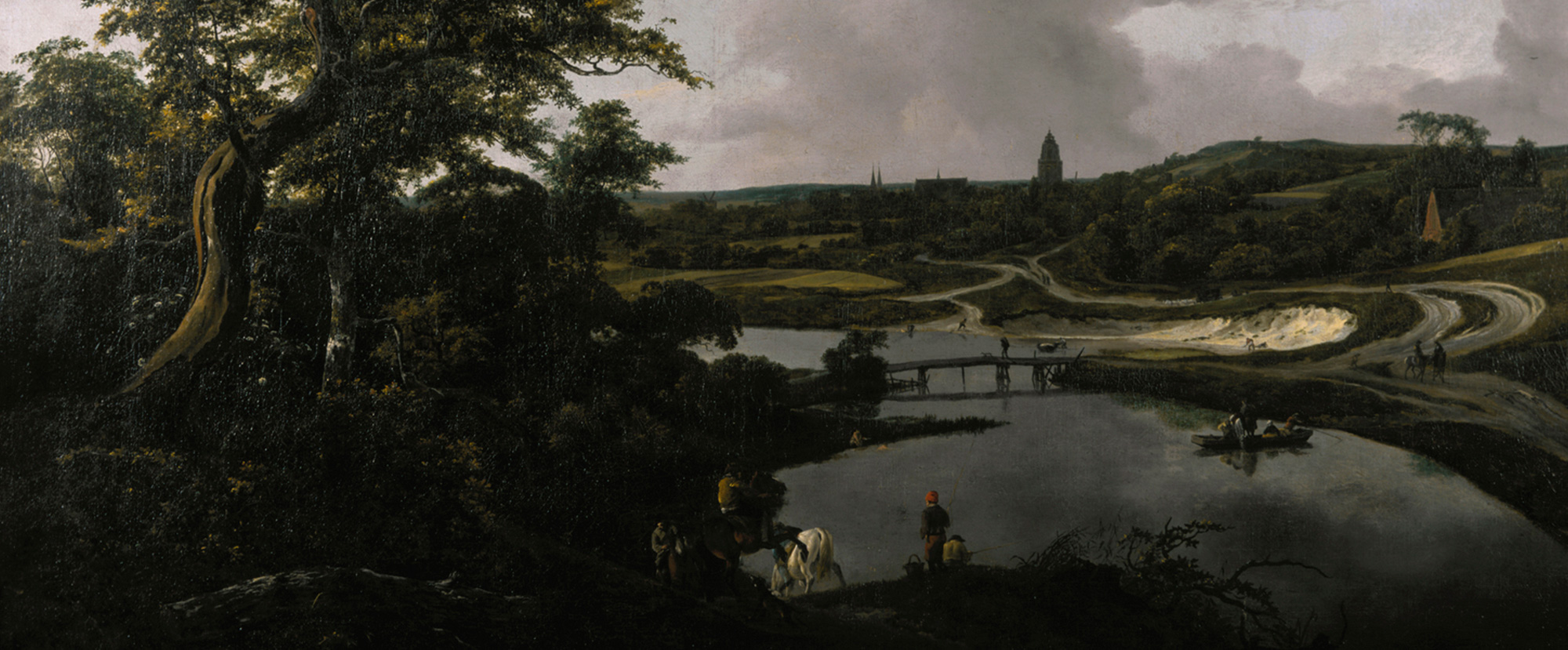
Highlights from our world-class Dutch and Flemish collection, including paintings by Rembrandt, Vermeer, Rubens and Van Dyck.
In 1588, the seven predominantly Protestant provinces of the Northern Netherlands separated from those in the South, still ruled by the Catholic Spanish monarchy. Holland was the largest province, with Amsterdam the commercial and cultural hub of the newly formed Dutch Republic. It quickly grew, eventually dominating world trade – including in enslaved people – with its substantial shipping fleet. Economic success fuelled the production of art on an unprecedented scale, from cheap prints to paintings, and from precious-metal objects to tapestries. This prosperity, combined with the broad range of items on offer, enabled many people across society to purchase artworks.
Artists in the Northern and Southern Netherlands in this period increasingly specialised in specific ‘genres’ or kinds of painting, such as portraiture, landscape, still life and scenes from everyday life. Most paintings were of modest size – certainly when compared to many Italian paintings of this time – so that they could be displayed in people’s houses. Although artists north and south of the political divide developed distinct subjects and styles, there was much exchange between the two countries, and many painters worked in both areas.
Display accessibility
Location
Gallery facilities
Detailed information on accessibility at the National Galleries of Scotland
Our partial Changing Places toilet has all of the facilities of a full Changing Places toilet, and though the floor area meets the overall size requirement (13.54m2 minimum), it is just a little too narrow to be classed as a full Changing Places toilet.
There are a limited number of small lockers available, but there is no space to store large items of luggage.
There is limited on street parking close by including for those with a blue badge.
Getting here
The National can be found just off Princes Street in the city centre.
Friends go free
Become a Friend to enjoy unique access to the nation’s art collection with unlimited free entry to exhibitions, Friends-only exhibition previews and a 10% discount in our gallery shops & cafés.
What's on
Browse what's on at the galleries below, or filter results to narrow your search.











